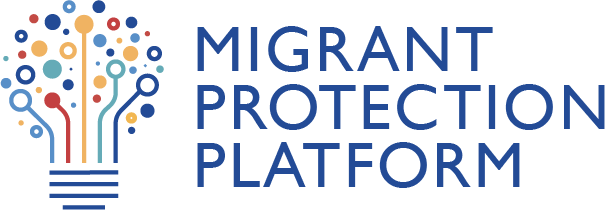IOM gathered stakeholders and IOM country offices for a pivotal regional roundtable event on countering human trafficking and exploitation related to the war in Ukraine.
Monitoring, Evaluation and Learning
Displaying 1 - 20 of 435
ICAT released its 2023 Annual Report, summarizing the different activities implemented in the year and results obtained.
This project evaluation report examines the resources and initiatives used to increase foster carers' ability to care for unaccompanied asylum-seeking children in the UK who are identified as victims of human trafficking and modern slavery, including Vietnamese, Albanian, and other ethnic groups. These comprise resources that educate youth about foster care...
IOM participated in the IPPN Knowledge Café on "Leveraging Migration for Accelerated Sustainable Development Outcomes", an event that was part of the joint IOM-UNDP global programme “Making Migration Work for Sustainable Development”.
Join the Side Event of the High-Level Political Forum on Sustainable Development (HLPF), set to take place on Wednesday 17 July 2024, to urge accelerated action to end child trafficking.
The Counter-Trafficking Data Collaborative (CTDC) has relaunched its website with a user-friendly interface designed to enhance accessibility and navigation to standardized case data on human trafficking.
This publication is an adaptation of the e-course, " Impact Evaluations for Return and Reintegration Programmes", produced for IOM's e-Campus online training platform. The e-course has been converted into document format for accessibility, and for convenient referencing and citation of the course content. This document may be helpful to use alongside the e...
Join IOM on 56th session of Human Rights Council side event on Advancing the human rights of migrant women returnees through gender-responsive reintegration services.
UNODC and IOM invite researchers to submit research abstracts on “Migrant Smuggling”, under the umbrella of UNNM Workstream to enhance migrant protection and coordination against trafficking.
In a large research study, the Research Centre of the Federal Office for Migration and Refugees (BAMF) and IOM joined forces to assess the return and reintegration experiences of almost 1,000 returnees who received assistance from the StarthilfePlus programme. The research looks at reintegration processes at the individual level across three dimensions of...
The main repository of the Migrant Protection Platform hosts now over 1,000 publications, all of them available for public consultation.
The webinar centred on examining the most recent research findings and perspectives regarding the reintegration of returnees.
The Global Synthetic Dataset is the largest publicly available source of individual-level data on human trafficking. It is available for visualization and download on the Counter Trafficking Data Collaborative (CTDC) website.
This report provides a comprehensive overview of the findings of the IMPACT study across all of its components. IMPACT is a study to evaluate how the assistance provided under the EU-IOM Joint Initiative Programme for Migrant Protection and Reintegration promotes the sustainable reintegration of the returning migrants in the Horn of Africa. IMPACT focuses on...
Understanding the needs of migrant workers across the labour migration life cycle, this reintegration manual offers practical guidance on designing, implementing, monitoring and evaluating reintegration assistance programmes for returning migrant workers in South Asia. The target audience for this manual are primarily policymakers, practitioners and service...
This document provides guidance to support the design and implementation of effective counter-trafficking projects that fit within a cohesive approach to thematic programming across the Organization focusing on what works and what we do best to achieve greater impact. Specifically, it identifies eight intervention models which, cumulatively, have the...
The “Aware Migrants” information campaign was designed to raise awareness among migrants and their communities about the risks of irregular migration along African routes across the desert and the Mediterranean Sea.
La Evaluación Rápida de Evidencia Sobre Riesgos de Protección de Población Migrante en Suramérica analiza las posibles vulneraciones de derechos a las que pueden verse expuestas las personas migrantes en la región, destacando los factores que inciden en la probabilidad de ser víctimas de actos de violencia como la trata de personas, el tráfico ilícito de...
The humanitarian situation in South Sudan remains tenuous, characterized by prolonged conflict, socio-political instability, and economic downturns. Within this context, the dynamics within the Central Equatoria region present a nuanced perspective, where climate-induced challenges, political strife, and societal shifts interact to shape the humanitarian...
On September 18 at 3.30pm (CEST) the Return and Reintegration Platform hosted the public webinar "Migration, Gender and Protection: Working Towards Transformative Approaches”. Simultaneous interpretation was available in English, French and Spanish.
